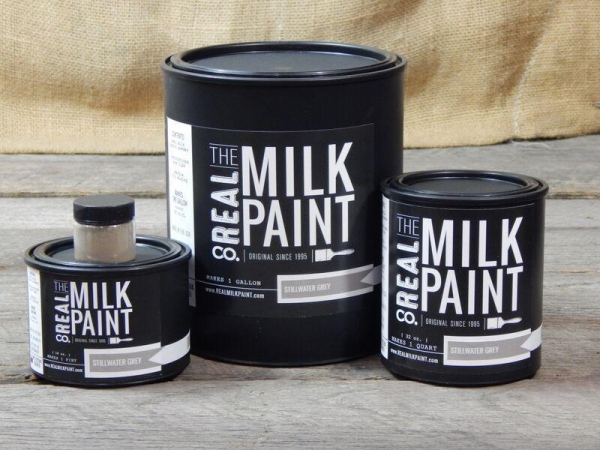
【ADP Tech. Column】COMPARING MILK PAINT VS. REGULAR PAINT
2018.06.20
Why you should choose milk paint, instead of regular paint? The answer is in the article!
---------------------------------------------------------------------------------------------------------------------------------------------------------------------------------------------
A painting project is a great way to revamp a piece of furniture, bring new life to a room, or update your home. But when you get to the paint section, you may notice that there are lots of different types of paints to choose from, and you may be at a loss for what to pick. One of the options you’ll have is milk paint, so today we’re going to discuss what milk paint is, compare it with regular paint, and explain why milk paint is better for your project, your home, and your health.
INGREDIENTS AND ENVIRONMENTAL CONSIDERATIONS
Typical paints that most people buy for projects around the house contain things like pigments, binders, solvents, and a variety of additives. The ingredients will vary depending on whether you’re looking at latex, acrylic, oil, or alkyd paints. These regular paints are usually not environmentally friendly, they contain lots of VOCs, and exposure to them isn’t good for your health.
Milk paint, on the other hand, is made from simple ingredients like milk protein, clay, and lime, meaning it’s non-toxic, environmentally friendly, and doesn’t give off noxious fumes and odors.
SUITABLE PAINTING SURFACES
With regular paints, you generally have to buy a specific type of paint depending on the surface you want to paint. For instance, you can use an oil paint on surfaces like concrete and stucco, but only after you seal or pre-treat the surface. Similarly, latex paint can be used on a lot of surfaces, but you can’t paint over oil paint with it. With milk paint with Ultra Bond, you can paint on virtually any surface without sanding or priming first, and this includes:
Wood
Glass
Metal
Masonry
Plastic
Drywall
Plaster
WHAT KIND OF FINISH DO YOU GET?
Oil and latex paints generally provide a consistent and even finish with a slight sheen. Milk paint produces a matte and velvety finish. With milk paint, you can either paint with it as it is, to create a naturally distressed look that develops over time, or you can add a binder to the paint before application to create a consistent and predictable finish.
EASE OF USE
Milk paint is easy and quick to apply, it’s forgiving, it dries quickly—in as little as 30 minutes—and it’s very easy to create different finish effects with. Also, you don’t have to sand or prime many surfaces before applying milk paint, which means a project will take significantly less time. While latex paint is easy to clean and fast drying relative to oil paint, it still takes several hours to dry, and you need to sand, wash, and prime surfaces before painting. Oil paints require this same pre-treatment and cleaning process, plus they need up to 24 hours to dry.
Aside from the fact that they’re both used to bring color to the world and breathe new life into room and furniture, milk paint and regular paints are otherwise very different. Their ingredients are different; they’re used on different surfaces and for different projects.
They also produce different types of finishes, they’re used to create different effects, and they have varying levels of ease when it comes to application. In general, milk paint is easier to use, faster to dry, cheaper to buy, more fun to apply, and better for the environment, which is why we always recommend milk paint over regular paint for all your projects, great and small.
Source: http://www.realmilkpaint.com/blog/tips/milk-paint-vs-regular-paint
